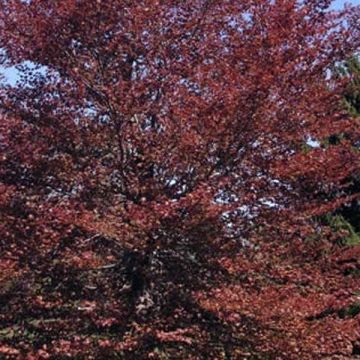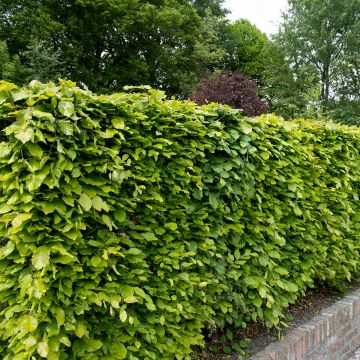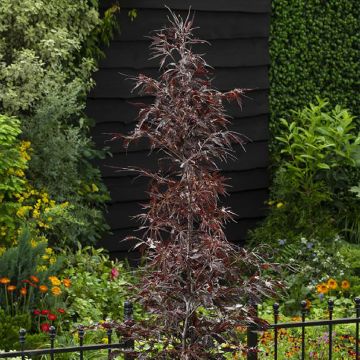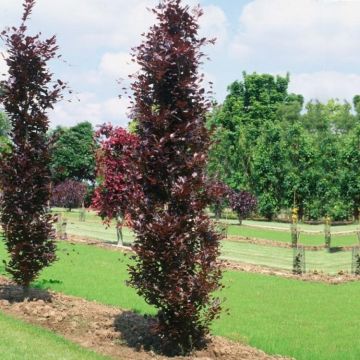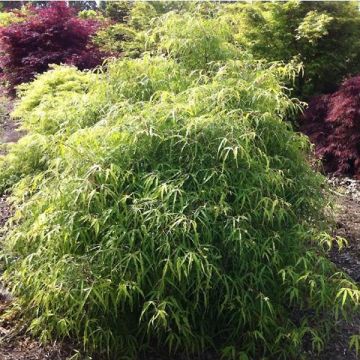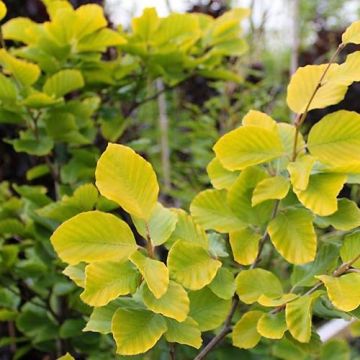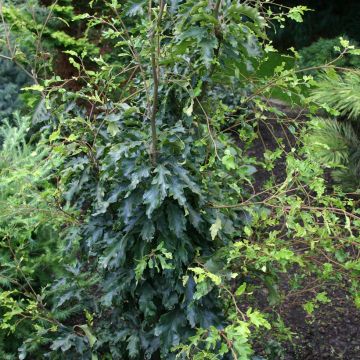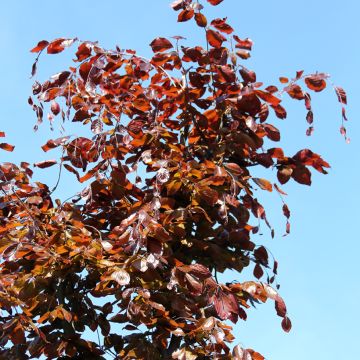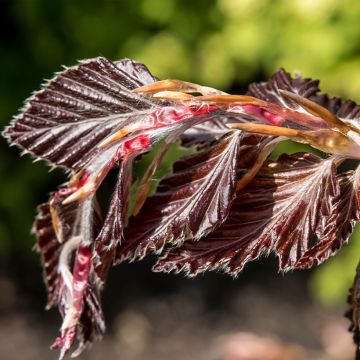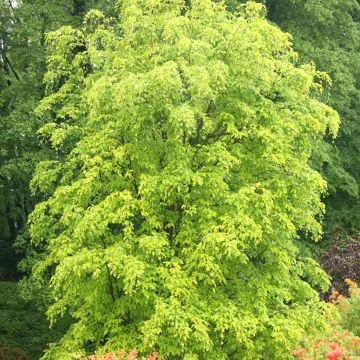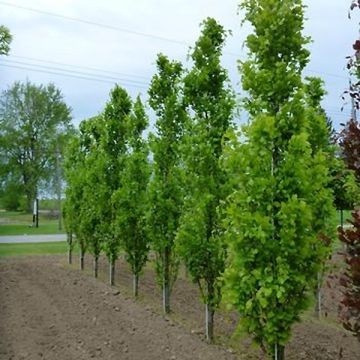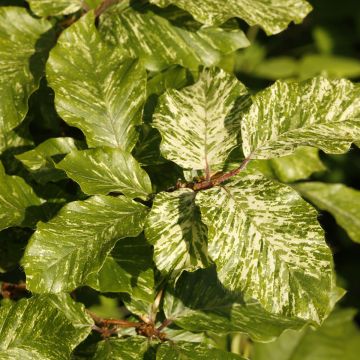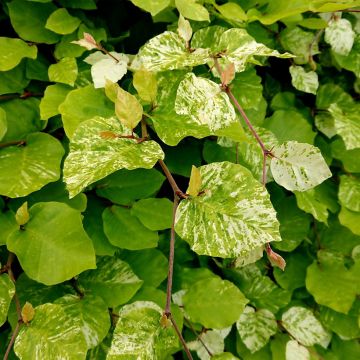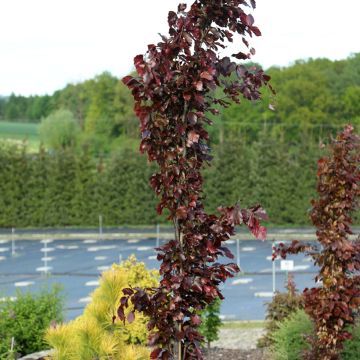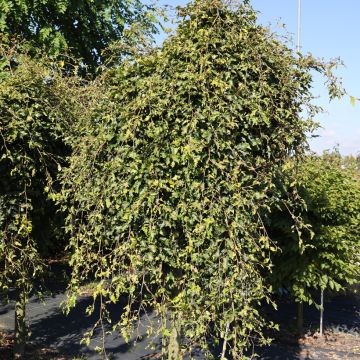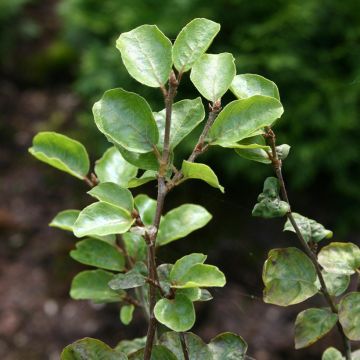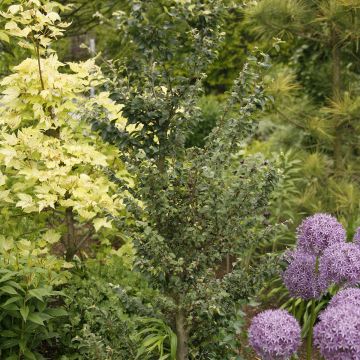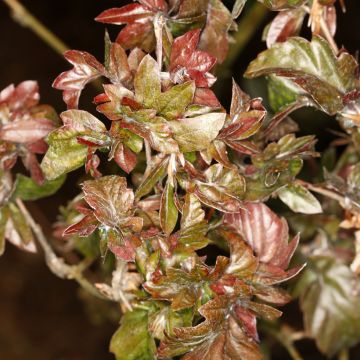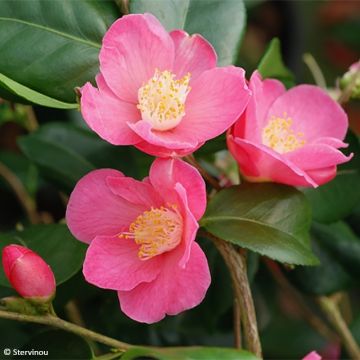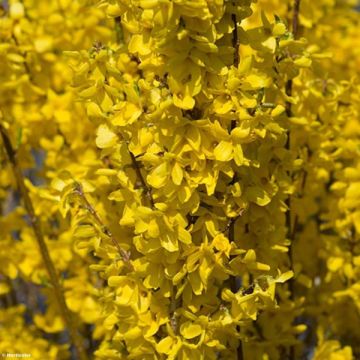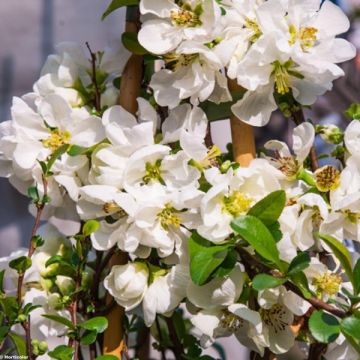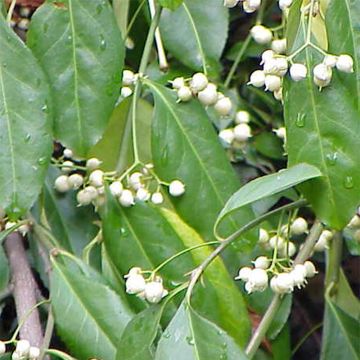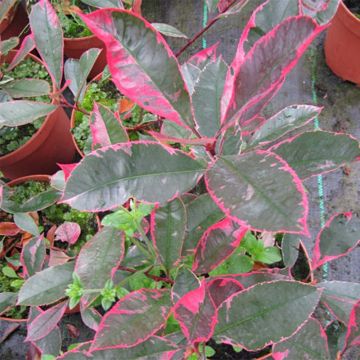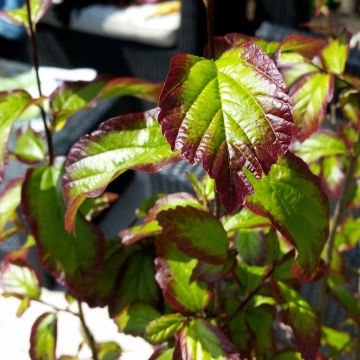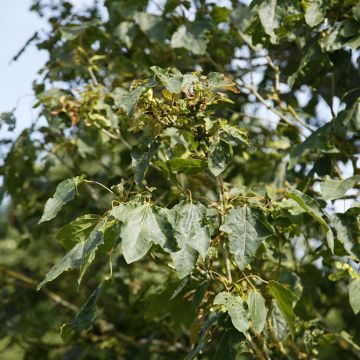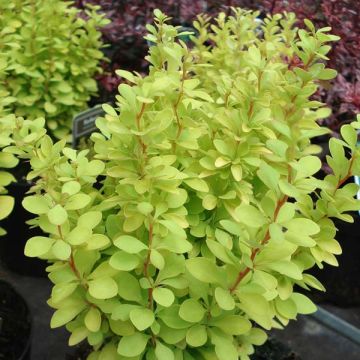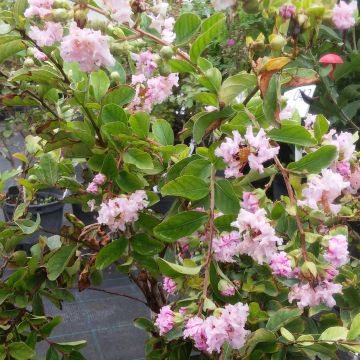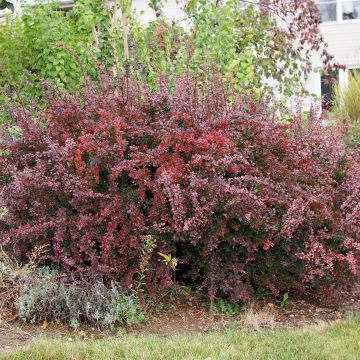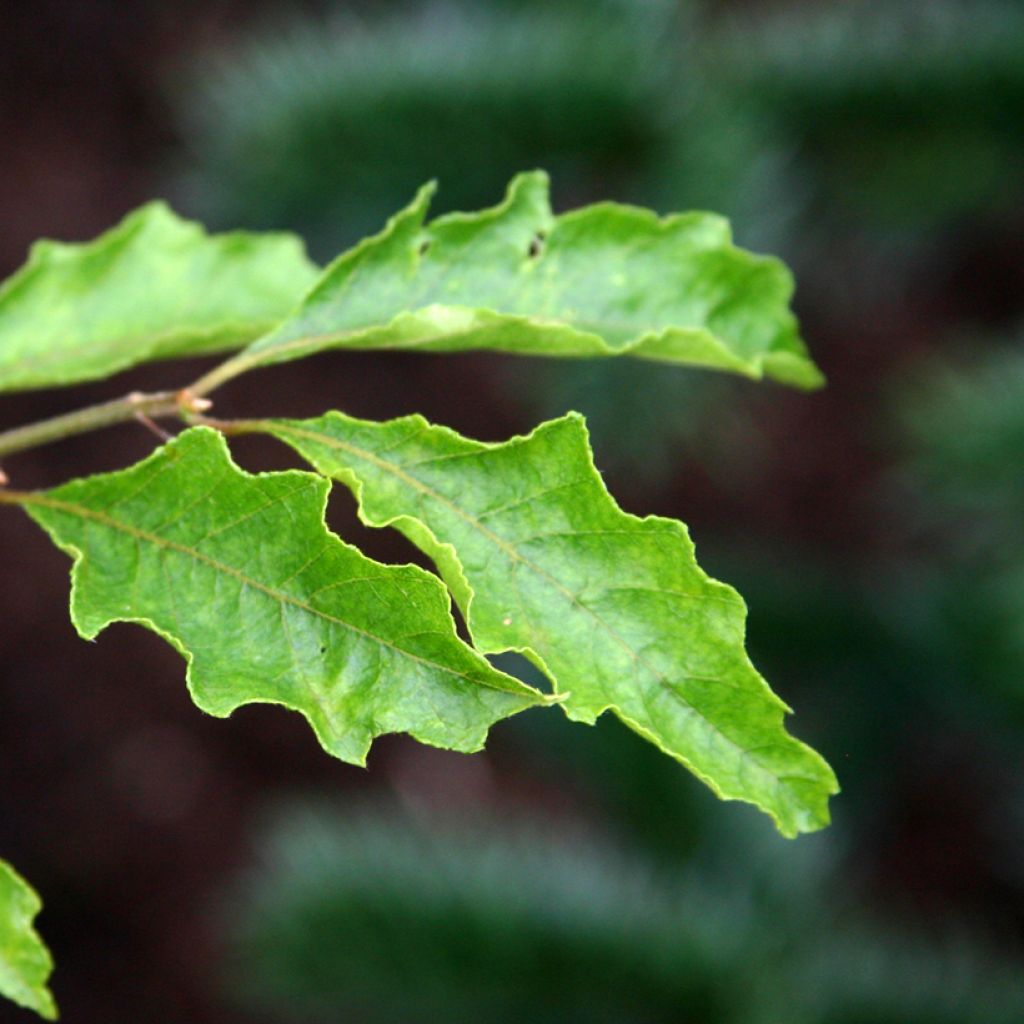

Fagus sylvatica Dentata
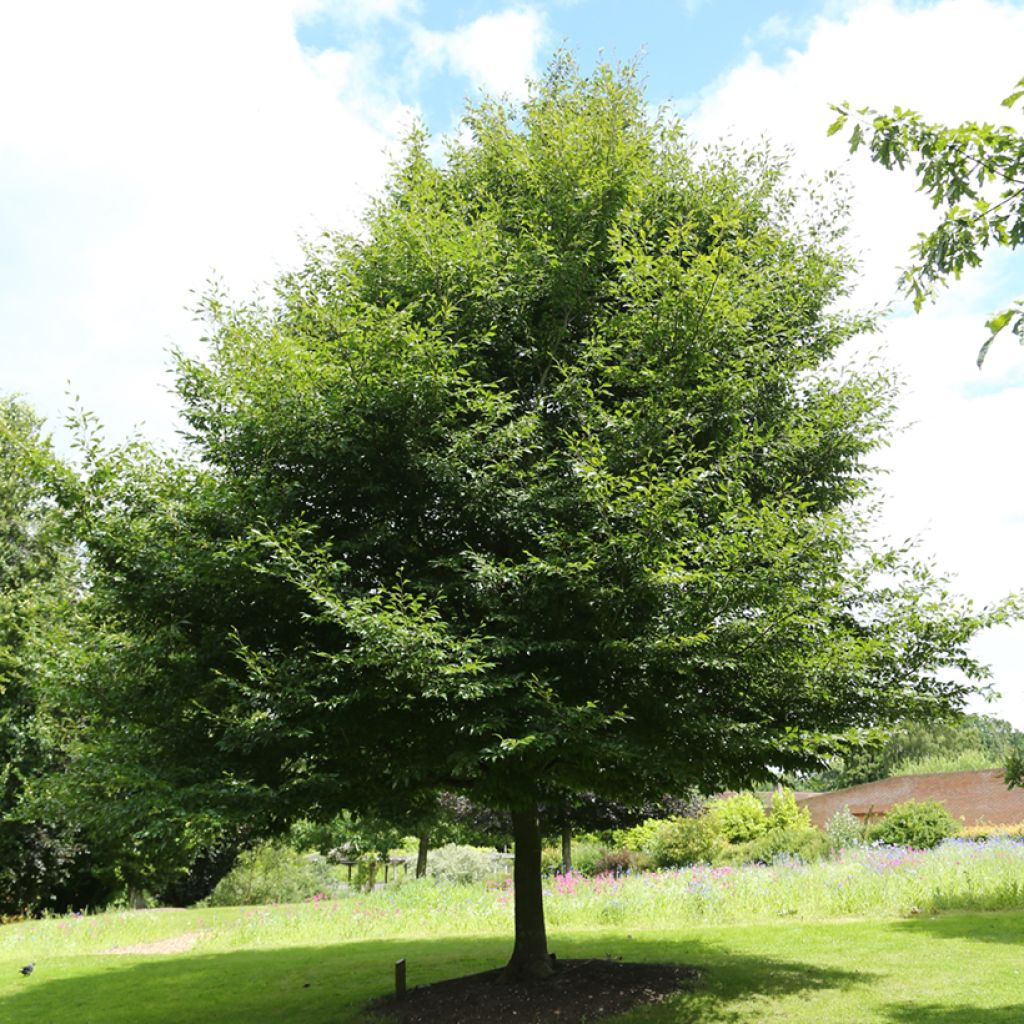

Fagus sylvatica Dentata
Fagus sylvatica Dentata
Fagus sylvatica Dentata
European Beech, Common Beech
Why not try an alternative variety in stock?
View all →This plant carries a 24 months recovery warranty
More information
We guarantee the quality of our plants for a full growing cycle, and will replace at our expense any plant that fails to recover under normal climatic and planting conditions.
From €5.90 for pickup delivery and €6.90 for home delivery
Express home delivery from €8.90.
Does this plant fit my garden?
Set up your Plantfit profile →
Description
Fagus sylvatica 'Dentata' is a variety of Common Beech with original foliage. This slow-growing tree forms a small tree of 10 m in height at maturity, with an oval and slightly elongated crown. The variety is characterised by elliptical leaves with coarsely toothed edges with teeth that can reach about 1 cm in length. The well-marked toothed edge is very elegant. Its leaves are green and turn yellow in autumn. This hardy Beech grows in full sun or partial shade, in most soils that are rather moist and humus-bearing.
The Beech, in Latin Fagus sylvatica, is an imposing tree with a spreading habit. Its cylindrical trunk is covered with smooth, light grey bark. This tree can live for several centuries. Native to central Europe to the Caucasus, it is one of the most common species in European forests reaching a height of 20 m at maturity. Its reddish wood is used in cabinetmaking and for the production of wooden tools and toys as well as firewood. It is a member of the Fagaceae family, which also includes the Oak, Chestnut, and a few other lesser-known genera.
The compact cultivar 'Dentata' is a slow-growing selection that reaches a height of 10 m at maturity and a width of 5 to 6 m. With a very dense branching, this bush forms an oval to slightly elongated crown. Its natural shape can be accentuated by appropriate pruning, it can even be made into a pseudo-bonsai. It is distinguished by elegant foliage, regularly and deeply toothed. Measuring from 5 to 10 cm in length, the leaves have an elongated elliptical shape with a pointed tip. They are unique and easily recognisable by their fairly deep toothed edge. Tender green in season, their slightly glossy surface is marked by a prominent central vein. In autumn, the foliage turns to a very ornamental golden yellow before browning and remaining on the branches for a long time before finally falling to the ground. In April, barely visible beige monoecious flowers appear. The male flowers are grouped in pendulous catkins, while the female flowers are grouped in 2 to 4 at the ends of the branches. Mature specimens produce shiny brown beech nuts covered with bristly prickles. These fruits are edible in small quantities. Mountain dwellers used to use them to make flour.
Hardy down to around -26°C, it can still suffer from late frosts. Growing in most soils, it appreciates a certain amount of humus and moisture, as drought is its enemy. Loamy or sandy loam soils are well-suited, as are sunny or partially shaded exposures.
Fagus sylvatica 'Dentata' is an architectural tree with attractive foliage, which can be planted in medium to large gardens. Requiring little maintenance, except for some watering during hot periods, it is an original variety that deserves to be planted more. Plant it as a specimen or in a large shrub border. Well-tolerant of pruning, it can be shaped to accentuate its natural form and become the central element of an architectural scene. Have fun creating a miniature border by planting a Dwarf Birch (Betula nana) next to it, a ground-covering shrub whose reduced foliage takes on magnificent reddish-orange tones in autumn, which will perfectly match the golden hues of the Beech. Another extremely sculptural subject, Chamaecyparis obtusa 'Nana Aurea' is a Japanese Hinoki Cypress whose foliage is arranged in cup-like structures arranged randomly. And to combine exceptional foliage with bright flowering, Mahonia 'Soft Caress' will be a perfect companion for your Beech, with its fern-like leaves and yellow autumnal flowers.
Report an error about the product description
Fagus sylvatica Dentata in pictures


Plant habit
Flowering
Foliage
Botanical data
Fagus
sylvatica
Dentata
Fagaceae
European Beech, Common Beech
Cultivar or hybrid
Other Fagus - Beech
Planting and care
Fagus sylvatica Dentata grows in the sun or in partial shade and thrives in cool and temperate climates. The soil must be moist and well-drained and always maintain a constant level of humidity, as it does not tolerate drought at all. Dig a hole with sides and depth of 50 or 60 cm, and add planting compost to the existing soil. Soak the root ball in a bucket of water for fifteen minutes before planting, place it in the ground, fill in around it, and water abundantly. Water regularly during the first two years, then monitor watering especially during hot periods. In February-March, when the tree is dormant, remove any branches that compromise symmetry or those that are tangled to maintain a good habit. Monitor the foliage for the possible appearance of scale insects.
Planting period
Intended location
Care
This item has not been reviewed yet - be the first to leave a review about it.
Hedge shrubs
Haven't found what you were looking for?
Hardiness is the lowest winter temperature a plant can endure without suffering serious damage or even dying. However, hardiness is affected by location (a sheltered area, such as a patio), protection (winter cover) and soil type (hardiness is improved by well-drained soil).

Photo Sharing Terms & Conditions
In order to encourage gardeners to interact and share their experiences, Promesse de fleurs offers various media enabling content to be uploaded onto its Site - in particular via the ‘Photo sharing’ module.
The User agrees to refrain from:
- Posting any content that is illegal, prejudicial, insulting, racist, inciteful to hatred, revisionist, contrary to public decency, that infringes on privacy or on the privacy rights of third parties, in particular the publicity rights of persons and goods, intellectual property rights, or the right to privacy.
- Submitting content on behalf of a third party;
- Impersonate the identity of a third party and/or publish any personal information about a third party;
In general, the User undertakes to refrain from any unethical behaviour.
All Content (in particular text, comments, files, images, photos, videos, creative works, etc.), which may be subject to property or intellectual property rights, image or other private rights, shall remain the property of the User, subject to the limited rights granted by the terms of the licence granted by Promesse de fleurs as stated below. Users are at liberty to publish or not to publish such Content on the Site, notably via the ‘Photo Sharing’ facility, and accept that this Content shall be made public and freely accessible, notably on the Internet.
Users further acknowledge, undertake to have ,and guarantee that they hold all necessary rights and permissions to publish such material on the Site, in particular with regard to the legislation in force pertaining to any privacy, property, intellectual property, image, or contractual rights, or rights of any other nature. By publishing such Content on the Site, Users acknowledge accepting full liability as publishers of the Content within the meaning of the law, and grant Promesse de fleurs, free of charge, an inclusive, worldwide licence for the said Content for the entire duration of its publication, including all reproduction, representation, up/downloading, displaying, performing, transmission, and storage rights.
Users also grant permission for their name to be linked to the Content and accept that this link may not always be made available.
By engaging in posting material, Users consent to their Content becoming automatically accessible on the Internet, in particular on other sites and/or blogs and/or web pages of the Promesse de fleurs site, including in particular social pages and the Promesse de fleurs catalogue.
Users may secure the removal of entrusted content free of charge by issuing a simple request via our contact form.
The flowering period indicated on our website applies to countries and regions located in USDA zone 8 (France, the United Kingdom, Ireland, the Netherlands, etc.)
It will vary according to where you live:
- In zones 9 to 10 (Italy, Spain, Greece, etc.), flowering will occur about 2 to 4 weeks earlier.
- In zones 6 to 7 (Germany, Poland, Slovenia, and lower mountainous regions), flowering will be delayed by 2 to 3 weeks.
- In zone 5 (Central Europe, Scandinavia), blooming will be delayed by 3 to 5 weeks.
In temperate climates, pruning of spring-flowering shrubs (forsythia, spireas, etc.) should be done just after flowering.
Pruning of summer-flowering shrubs (Indian Lilac, Perovskia, etc.) can be done in winter or spring.
In cold regions as well as with frost-sensitive plants, avoid pruning too early when severe frosts may still occur.
The planting period indicated on our website applies to countries and regions located in USDA zone 8 (France, United Kingdom, Ireland, Netherlands).
It will vary according to where you live:
- In Mediterranean zones (Marseille, Madrid, Milan, etc.), autumn and winter are the best planting periods.
- In continental zones (Strasbourg, Munich, Vienna, etc.), delay planting by 2 to 3 weeks in spring and bring it forward by 2 to 4 weeks in autumn.
- In mountainous regions (the Alps, Pyrenees, Carpathians, etc.), it is best to plant in late spring (May-June) or late summer (August-September).
The harvesting period indicated on our website applies to countries and regions in USDA zone 8 (France, England, Ireland, the Netherlands).
In colder areas (Scandinavia, Poland, Austria...) fruit and vegetable harvests are likely to be delayed by 3-4 weeks.
In warmer areas (Italy, Spain, Greece, etc.), harvesting will probably take place earlier, depending on weather conditions.
The sowing periods indicated on our website apply to countries and regions within USDA Zone 8 (France, UK, Ireland, Netherlands).
In colder areas (Scandinavia, Poland, Austria...), delay any outdoor sowing by 3-4 weeks, or sow under glass.
In warmer climes (Italy, Spain, Greece, etc.), bring outdoor sowing forward by a few weeks.

































